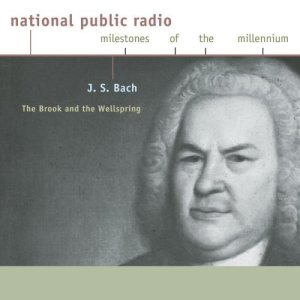

In the summer months, there’s probably more music-per-capita-per-minute in Aspen than anywhere else on the planet – The Aspen Music Festival & School crams 350+ concerts, lectures, and events into eight or so weeks between the end of June and mid-August. But the place doesn’t go entirely dark after Labor Day…your humble correspondent was on hand Wednesday night for the opening of Aspen’s Winter Series that takes place in 500-seat Harris Concert Hall. Most of those seats sic Festival appearance. Part of that appeal, I suspect, is how profoundly uncategorizable hewere filled Wednesday for a recital by pianist Vladimir Feltsman. Feltsman has long been an Aspen favorite – in fact, he’ll be back in the Meadows this summer for his fourteenth consecutive Mu is – he’s gone through his “big burly Russian” phases, playing concertos by Tchaikovsky et al; he’s embraced the keyboard music of J.S. Bach with a vengeance, with some compelling readings (and recordings) of the Partitas and Inventions; and last fall he presented a cycle of Mozart’s piano sonatas on a fortepiano – that is, a modern replica of an instrument that Mozart owned – a piano built in the 1780’s by Viennese manufacturer Anton Walter.
But that’s not how we first found out about Vladimir Feltsman. Twenty years ago, he was a reluctant celebrity of the Cold War, after the U.S. State Department and President Ronald Reagan personally took up his cause for emigration. (Feltsman had applied for an exit visa in 1979 and his career was subsequently put on ice by Soviet authorities). Feltsman’s first commercial recording, of the 24 Preludes by Frederic Chopin, in fact, was recorded in 1984 inside the American Embassy in Moscow, and subsequently smuggled out of the country in a diplomatic pouch and released on CBS Masterworks – back when the phrase “two-record set” was a big deal. By the summer of 1987, the Americans had made enough noise, and the Soviets felt enough heat, to let Feltsman go…and suddenly there he was in the White House, giving his debut American performance with the President and First Lady leading the applause.
Needless to say, with that kind of attention, there was, in the words of the New York Times, a firestorm of publicity – not to mention curiosity – about Feltsman the artist. Was he truly the next Horowitz, or merely being played as pawn in the East-West political struggle? You could hear passionate arguments on both sides. Hard to imagine that all happened 20 years ago – or that Feltsman’s own website blandly states that “Mr. Feltsman emigrated to the United States in 1987, and that same year, his debut at Carnegie Hall immediately established him as a major pianist on the American scene.”
Major pianist, yes, but I think one happy enough to pursue his own unique path. He’s a sophisticated, searching, and accomplished pianist, but I suspect that he’s had enough “celebrity” in his career. It’ll be interesting to see if and how Feltsman chooses to commemorate those headline-grabbing events of the summer of 1987.
P.S. Back on the subject of the headline – Aspen was one of the first places I know to have its own Town webcams – you can even move them around to create your own custom views of the town. It’s a great bookmark when you’re bored!








You must be logged in to post a comment.